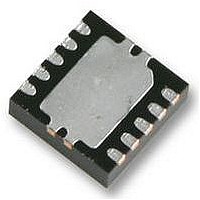LT3592EDDB#PBF Linear Technology, LT3592EDDB#PBF Datasheet - Page 12

LT3592EDDB#PBF
Manufacturer Part Number
LT3592EDDB#PBF
Description
IC, LED DRIVER, BUCK, DFN-10
Manufacturer
Linear Technology
Datasheet
1.LT3592EDDBTRMPBF.pdf
(24 pages)
Specifications of LT3592EDDB#PBF
Led Driver Application
Automotive, Industrial Lighting
No. Of Outputs
1
Output Current
500mA
Output Voltage
30V
Input Voltage
3.6V To 36V
Dimming Control Type
PWM
Topology
Buck
Operating Supply Voltage (typ)
5/9/12/15/18/24V
Number Of Segments
2
Operating Temperature (min)
-40C
Operating Temperature (max)
125C
Operating Temperature Classification
Automotive
Package Type
DFN EP
Pin Count
10
Mounting
Surface Mount
Operating Supply Voltage (max)
36V
Lead Free Status / RoHS Status
Lead free / RoHS Compliant
Lead Free Status / RoHS Status
Lead free / RoHS Compliant
Available stocks
Company
Part Number
Manufacturer
Quantity
Price
APPLICATIONS INFORMATION
LT3592
As the input voltage increases, the inductor current ramps
up more quickly, the number of skipped pulses increases,
and the output voltage ripple increases. For operation
above V
they be adequately rated for operation at the intended
voltage levels.
The LT3592 is robust enough to survive prolonged opera-
tion under these conditions as long as the peak inductor
current does not exceed 1.2A. Inductor saturation due to
high current may further limit performance in this operat-
ing regime.
Inductor Selection and Maximum Output Current
A good fi rst choice for the inductor value is:
where V
(~0.4V), f is the switching frequency in MHz and L is in μH.
With this value, there will be no subharmonic oscillation for
applications with 50% or greater duty cycle. For low duty
cycle applications in which V
V
where V
500mA). The inductor’s RMS current rating must be greater
than your maximum load current and its saturation current
should be about 30% higher. For robust operation in fault
conditions, the saturation current should be above 1.5A. To
keep effi ciency high, the series resistance (DCR) should be
less than 0.1Ω. Table 2 lists several inductor vendors.
Of course, such a simple design guide will not always re-
sult in the optimum inductor for your application. A larger
value provides a higher maximum load current and reduces
output voltage ripple at the expense of a slower transient
response. If your load is lower than 500mA, then you can
decrease the value of the inductor and operate with higher
ripple current. This allows you to use a physically smaller
inductor, or one with a lower DCR resulting in higher effi -
ciency. There are several graphs in the Typical Performance
12
L = 1.7 •
OUT
L = 1.2A •
, a good guide for the minimum inductor value is
IN(MAX)
D
SW
is the forward voltage drop of the catch diode
(
V
is the switch voltage drop (about 0.3V at
IN
V
(
IN
V
, the only component requirement is that
OUT
V
OUT
V
SW
+ 0.2V + V
ƒ
+ V
0.2V
D
IN
)
D
is more than three times
)
•
(
V
OUT
+ 0.2V + V
ƒ
D
)
Characteristics section of this data sheet that show the
maximum load current as a function of input voltage and
inductor value for several popular output voltages. Low
inductance may result in discontinuous mode operation,
which is acceptable, but further reduces maximum load
current. For details of the maximum output current and
discontinuous mode operation, see Linear Technology
Application Note 44.
Catch Diode
Depending on load current, a 500mA to 1A Schottky di-
ode is recommended for the catch diode, D1. The diode
must have a reverse voltage rating equal to or greater
than the maximum input voltage. The ON Semiconductor
MBRA140T3 and Central Semiconductor CMMSH1-40 are
good choices, as they are rated for 1A continuous forward
current and a maximum reverse voltage of 40V.
Input Filter Network
For applications that only require a capacitor, bypass V
with a 1μF or higher ceramic capacitor of X7R or X5R
type. Y5V types have poor performance over tempera-
ture and applied voltage and should not be used. A 1μF
ceramic capacitor is adequate to bypass the LT3592 and
will easily handle the ripple current. However, if the input
power source has high impedance, or there is signifi cant
inductance due to long wires or cables, additional bulk
capacitance might be necessary. The can be provided
with a low performance (high ESR) electrolytic capacitor
in parallel with the ceramic device.
Some applications, such as those in automobiles, may
require extra fi ltering due to EMI/EMC requirements. In
these applications, very effective EMI fi ltering can be pro-
vided by a capacitor to ground right at the source voltage,
a series ferrite bead, and a pi fi lter composed of a capacitor
to ground, a series inductor, and another capacitor directly
from the device pin to ground (see the Block Diagram for
an example). Typical values for the fi lter components are
10nF for C2C, a ferrite bead that is ~220Ω at 100MHz for
L2, 3.3μF for C2B, 10μH for L3, and 1μF for C2A.
Step-down regulators draw current from the input sup-
ply in pulses with very fast rise and fall times. The input
capacitor is required to reduce the resulting voltage ripple
3592fc
IN














